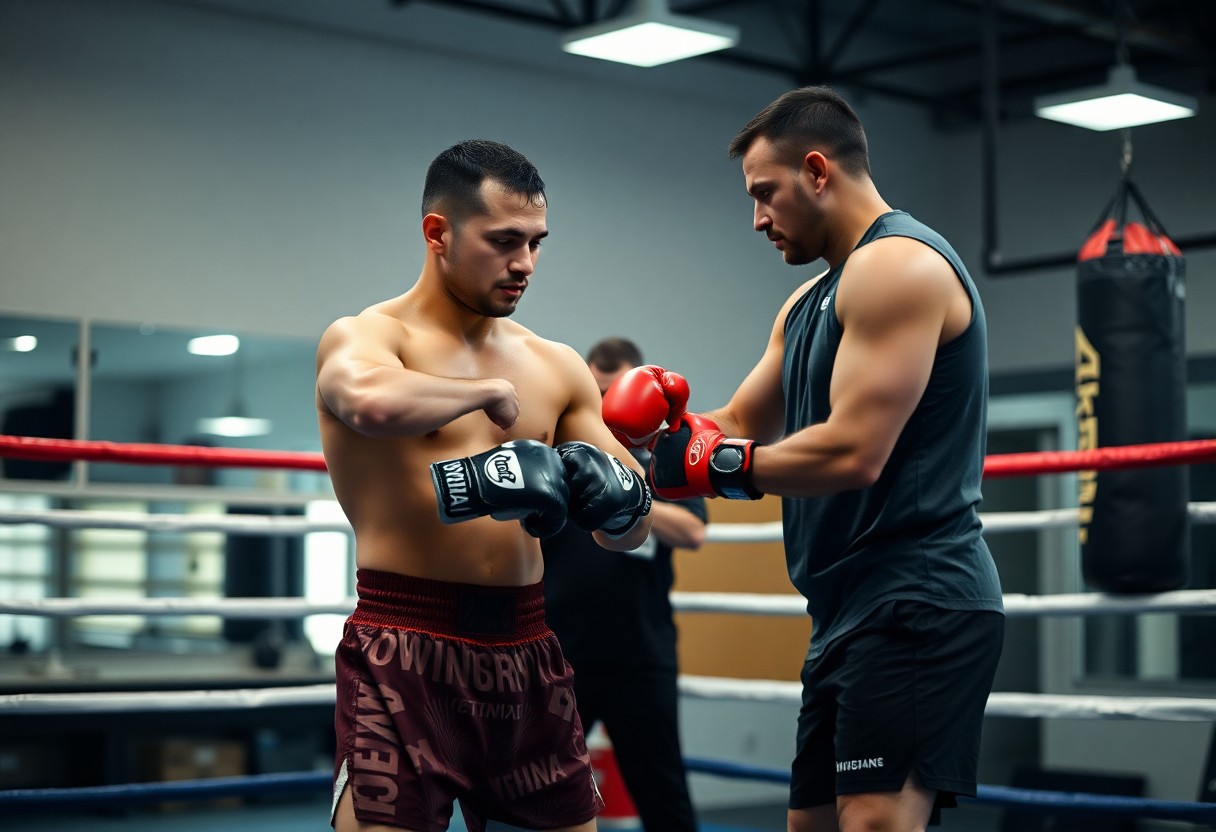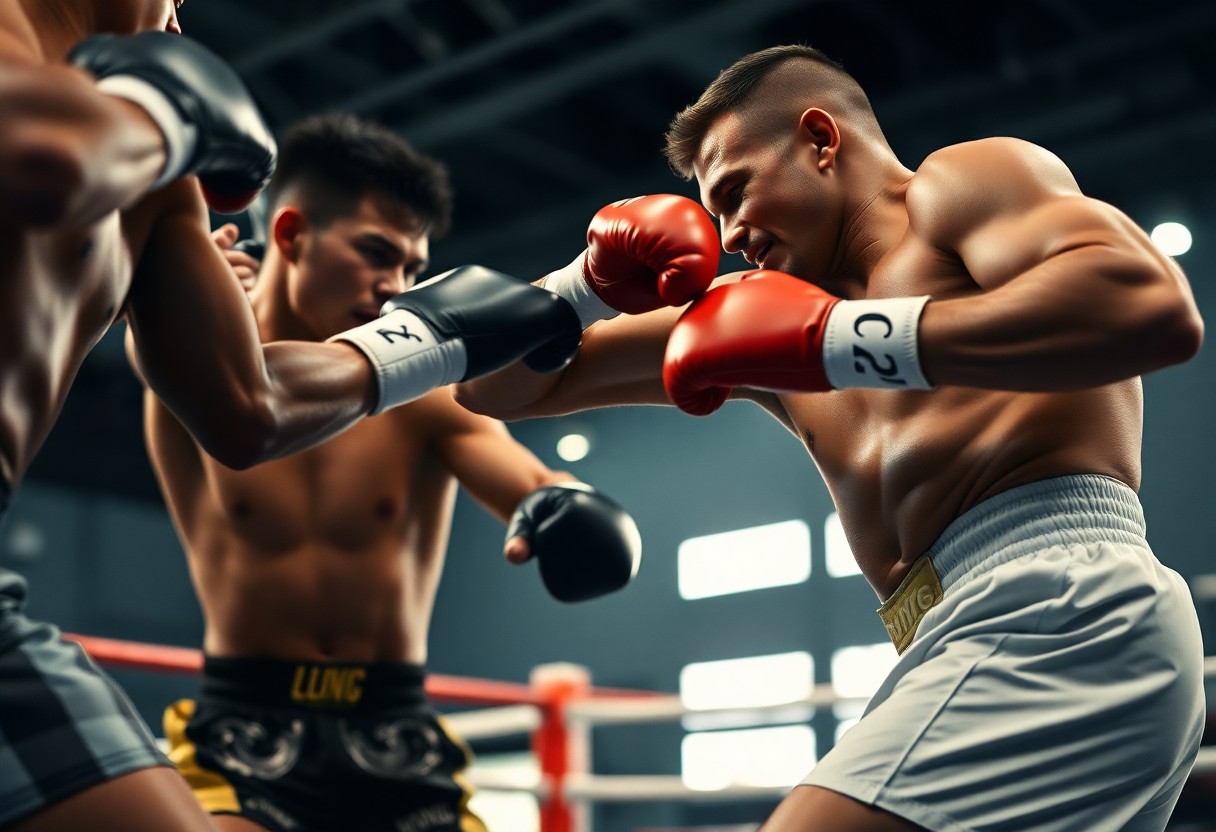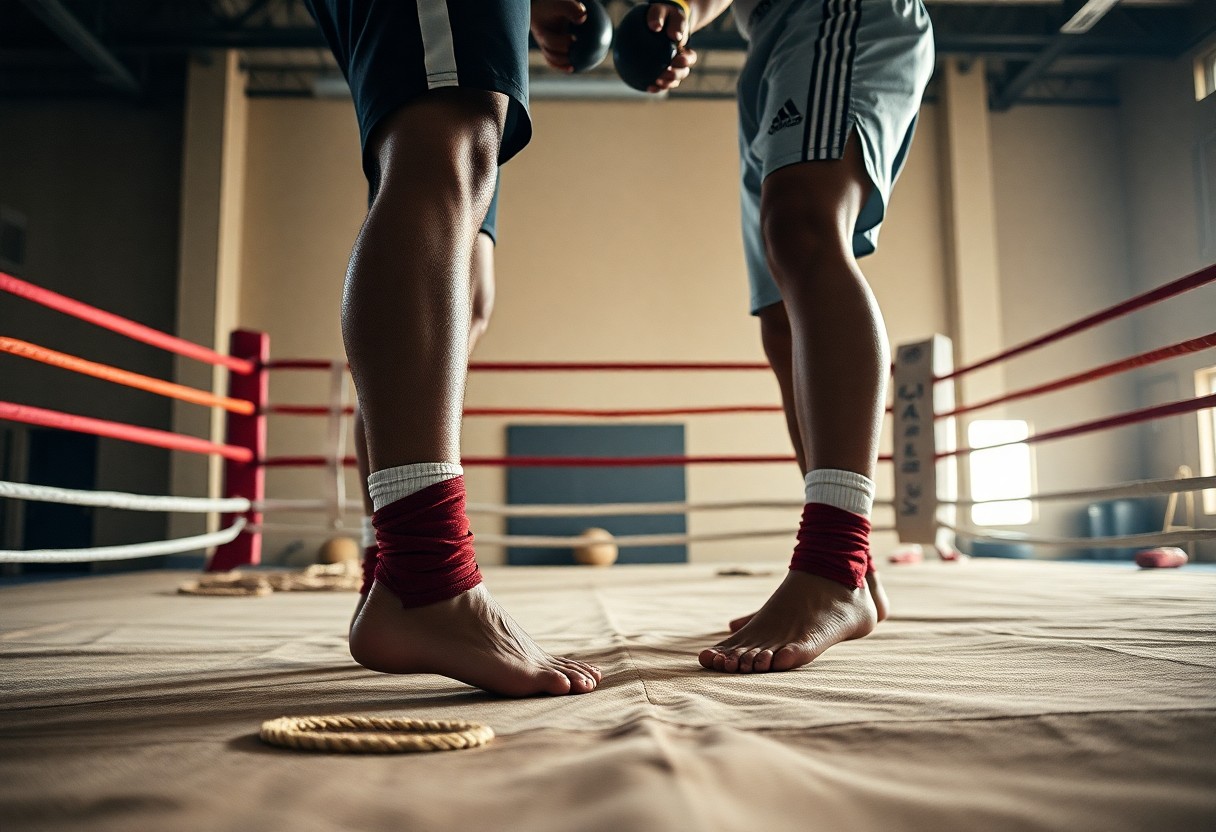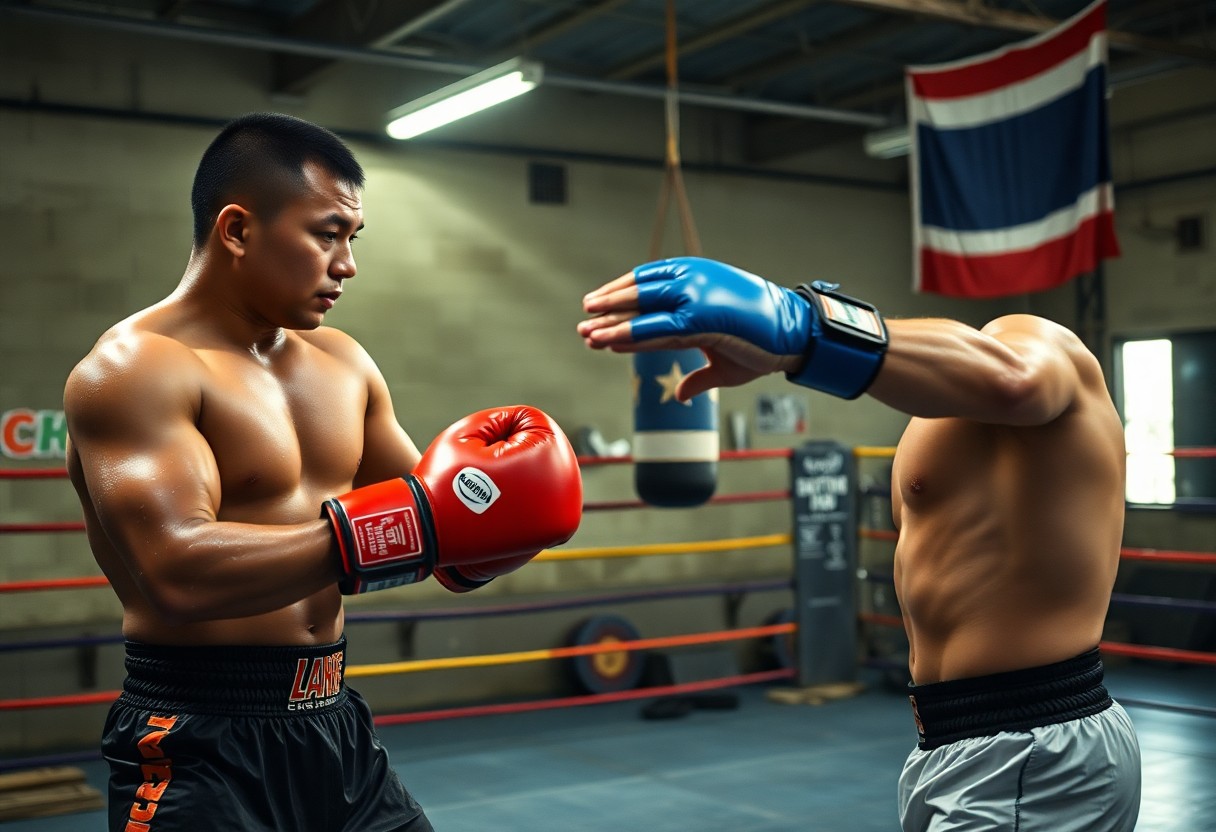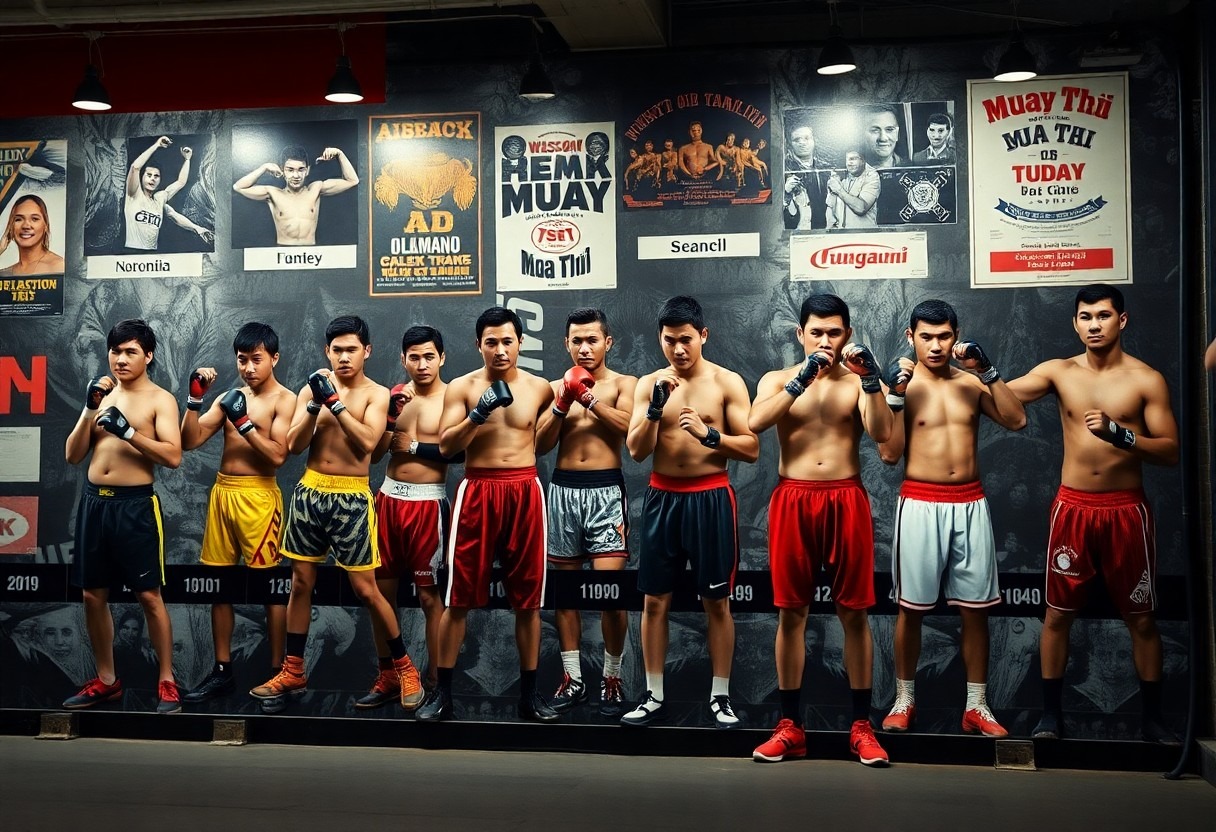
Fighters have always played a pivotal role in shaping the sport of Muay Thai, evolving it from traditional combat to a globally recognized martial art. Historical legends and modern champions alike highlight the sport’s rich heritage, showcasing a blend of technique, discipline, and resilience. This guide will explore the impact of these iconic athletes, illustrating how their stories reflect the transformation and globalization of Muay Thai through the years.
Overview of Muay Thai
The striking art of Muay Thai, often known as the “Art of Eight Limbs,” utilizes various combat techniques, emphasizing the use of fists, elbows, knees, and shins. Originating in Thailand, it has evolved from a battlefield fighting technique into a respected sport worldwide. This martial art has gained significant attention in recent years, influencing mixed martial arts (MMA) and contributing to fitness trends while preserving its rich cultural heritage.
History and Origins
Muay Thai’s roots trace back centuries, originating as a military training method during the 16th century. It developed from traditional Thai martial arts such as “Muay Boran,” which were employed in battlefield combat. Over time, it transformed into a sport enjoyed by the public, becoming an integral part of Thai culture, particularly with the establishment of formalized competitions in the 20th century.
Key Characteristics
Muay Thai is distinguished by its unique striking techniques, which incorporate the use of all parts of the body for offense and defense. Practitioners rely on a combination of elbows, knees, punches, and kicks, making it a versatile and dynamic fighting style. Fighters train extensively in conditioning, footwork, and ring strategy, ensuring they are adept in both attacking and defending, showcasing resilience, and mental discipline.
A hallmark of Muay Thai’s effectiveness is its emphasis on clinch fighting, allowing combatants to control opponents at close range. The clinch, combined with powerful knee strikes and elbow techniques, proves lethal when executed well. Additionally, footwork is vital, enabling fighters to maneuver effectively and evade strikes. The scoring system rewards aggressive techniques and control, creating a dynamic fight environment that highlights skill and strategy, making Muay Thai a unique blend of athleticism and artistry.
Types of Famous Fighters
- Traditional Fighters
- Modern Champions
The evolution of Muay Thai reveals two distinct categories of fighters, each representing different eras and styles that have shaped the sport’s legacy.
| Type of Fighter | Description |
|---|---|
| Traditional Fighters | Pioneers who laid the foundation for Muay Thai, often mastering ancient techniques. |
| Modern Champions | Contemporary athletes known for their athleticism and strategic fighting styles. |
| Female Warriors | Breaking barriers in a male-dominated sport, showcasing skill and resilience. |
| International Stars | Fighters from various countries bringing global attention to Muay Thai. |
| Luminaries | Iconic figures who have significantly influenced the sport’s development. |
Traditional Fighters
Traditional fighters are revered as the architects of Muay Thai, often showcasing their prowess through techniques honed over generations. These combatants embody the spirit of Krabi Krabong and other historical practices, contributing to a unique fighting style that emphasizes respect and tradition. Names like Ramon Dekkers echo through history, marking the transition from ancient warriors to modern athletes.
Modern Champions
Modern champions have revitalized Muay Thai by incorporating advanced training methods and global influences. These fighters, such as Saenchai and Buakaw, are celebrated for their striking precision and innovative techniques, appealing to a wider audience. They elevate the sport’s profile through their performances and adaptability in the ring, showcasing the evolution of technique and strategy.
Modern champions not only integrate traditional elements but also embrace fitness regimes that include strength conditioning and nutrition, enhancing their performance. They frequently compete in international arenas, bringing diverse styles to Muay Thai and attracting fans worldwide. Their influence has elevated Muay Thai into a global phenomenon, making it a staple in mixed martial arts and professional combat sports, generating broader appreciation for this ancient art form.
Tips for Aspiring Fighters
- Focus on strong fundamentals
- Develop cardiovascular endurance
- Incorporate flexibility training
- Master technique over power
- Practice mental resilience
Recognizing that these elements are vital for success will guide aspiring fighters on their journey.
Training Techniques
Building a solid foundation in Muay Thai starts with training techniques that combine striking, clinching, and movement. Aspiring fighters should focus on shadowboxing, pad work, and sparring to enhance their skills. Regularly practicing footwork improves balance and agility, while heavy bag work strengthens power and conditioning. Consistency in training ensures progress.
Mental Preparation
A strong mental game is as important as physical training for aspiring fighters. Visualization techniques can help them envision themselves executing techniques flawlessly and winning fights, which has been shown to enhance performance. Setting achievable goals fosters motivation and discipline, leading to greater focus during training.
In addition to visualization, integrating breathing exercises into daily routines helps combat stress and anxiety before bouts. Studying the mental strategies employed by successful fighters can also provide insights into enhancing one’s own mental toughness. Engaging in meditation or mindfulness practices further develops concentration, enabling fighters to remain calm under pressure. Building a robust mental framework establishes a fighter’s resilience and adaptability, necessary traits for thriving in competitive environments.
Step-by-Step Guide to Learning Muay Thai
| Stage | Description |
|---|---|
| Fundamentals | Focus on stance, footwork, and basic strikes. |
| Technique | Learn combinations and defensive maneuvers. |
| Conditioning | Incorporate strength, cardio, and flexibility training. |
| Advanced Skills | Work on timing, distance management, and counters. |
Starting with the Basics
Establishing a solid foundation in Muay Thai requires mastering the basic stance, footwork, and important strikes such as punches, kicks, knees, and elbows. Spend time practicing these elements to ensure proper form and balance, which are vital for progression. Incorporate drills that enhance muscle memory and positioning, setting the stage for more advanced techniques.
Advanced Techniques
Once basics are refined, attention shifts to advanced techniques that include learning to time strikes accurately, managing distance effectively, and executing combination attacks. These skills not only increase effectiveness in the ring but also enhance situational awareness. Consistent practice allows fighters to react with precision and adapt strategies based on the opponent’s movements.
- Practice counterattacks against common strikes.
- Incorporate sparring sessions for real-time application.
- Analyze fights to learn from advanced practitioners.
| Advanced Technique | Application |
|---|---|
| Elbow Strikes | Utilized at close range for effective damage. |
| Knee Techniques | Ideal for clinch situations to control opponents. |
| Spinning Techniques | Utilized for surprise attacks, enhancing unpredictability. |
Factors Influencing the Evolution of Muay Thai
The evolution of Muay Thai has been shaped by various factors, including societal changes, technological advancements, and governmental support. These elements have contributed to the sport’s visibility and integration into global culture. Key influences include:
- Cultural heritage
- Economic growth
- Media exposure
- International tournaments
Perceiving the importance of these factors offers insight into how Muay Thai has not only survived but thrived in changing environments.
Cultural Impact
The cultural impact of Muay Thai extends beyond the ring, deeply embedding itself in Thai traditions and rituals, such as the Wai Kru ceremony. This form of respect and homage to trainers and ancestors emphasizes the martial art’s profound spiritual significance, fostering community ties and national pride.
Globalization
Globalization has played a pivotal role in the expansion of Muay Thai, attracting fighters and enthusiasts from all over the world. As interconnectivity increases, the sport has found its way into various international competitions and fitness programs, drawing millions into its practice.
Internationally, Muay Thai has gained recognition through platforms such as ONE Championship and the UFC, promoting cross-training among mixed martial artists. The sport’s increasing presence in fitness centers and martial arts academies worldwide highlights its appeal, driven by practical health benefits and self-defense applications. Its incorporation into popular culture, including films and documentaries, further fuels interest, enticing a diverse audience to explore what was once a regional discipline.
Pros and Cons of Muay Thai
| Pros | Cons |
|---|---|
| Improves cardiovascular fitness | Risk of injuries, especially in sparring |
| Enhances strength and flexibility | High physical demands may lead to burnout |
| Develops self-defense skills | Requires commitment and consistency |
| Boosts mental discipline and focus | Potential for concussions |
| Encourages community and camaraderie | Time-consuming training sessions |
Benefits of Training
Training in Muay Thai offers numerous advantages such as enhanced physical conditioning, improved agility, and increased mental resilience. Fighters refine their coordination and balance, promoting overall body awareness. The practice cultivates an environment of discipline, making it an effective vehicle for stress relief and personal growth. Regular training sessions also foster a sense of community, allowing practitioners to make lasting friendships while pursuing shared goals.
Potential Risks
Despite its benefits, Muay Thai carries certain risks. Injuries can occur, particularly from striking and sparring exercises, which may involve falls, bruises, or more severe injuries. Understanding these risks is vital for safe participation.
Additional Insights on Potential Risks
Injuries in Muay Thai often range from minor to serious. Common issues include cuts, sprains, and fractures, especially to the hands and feet due to the high-impact nature of the sport. Overtraining is another concern, where pushing physical limits can lead to exhaustion or burnout. Additionally, the contact aspect of training, while beneficial for practical self-defense, requires proper protective gear and careful sparring practices to mitigate risks. Educating oneself about techniques, maintaining communication with trainers, and emphasizing personal limits can significantly reduce injury occurrences.
Conclusion
Presently, the evolution of Muay Thai is intricately linked to its most iconic fighters, whose legacies shaped the art into a globally recognized sport. From legendary champions like Samart Payakaroon to contemporary stars such as Saenchai, each fighter has contributed techniques, strategies, and cultural significance that continue to influence practitioners worldwide. Understanding their impact not only enriches the appreciation of Muay Thai but also highlights the dynamic nature of this martial art, affirming its status as both a competitive sport and a traditional practice deeply rooted in history.
FAQ
Q: Who are some of the most famous fighters in the history of Muay Thai?
A: Notable fighters include Nai Khanom Tom, known as the “Father of Muay Thai,” Saenchai, recognized for his technical skill and entertainment value, and Buakaw Banchamek, who brought international attention to the sport with his dynamic fighting style.
Q: How has Muay Thai evolved in terms of techniques and training methods?
A: Muay Thai techniques have evolved from traditional forms to incorporate modern practices, blending Western boxing techniques and varied training approaches, such as strength and conditioning, to enhance fighters’ performance and adaptability in different fighting environments.
Q: What role does the cultural significance of Muay Thai play in shaping its fighters?
A: The cultural significance of Muay Thai is integral, as fighters often train from a young age, embody spiritual and physical principles derived from Thai heritage, and engage in rituals that honor their trainers and the sport itself, thus impacting their fighting styles and dedication.


